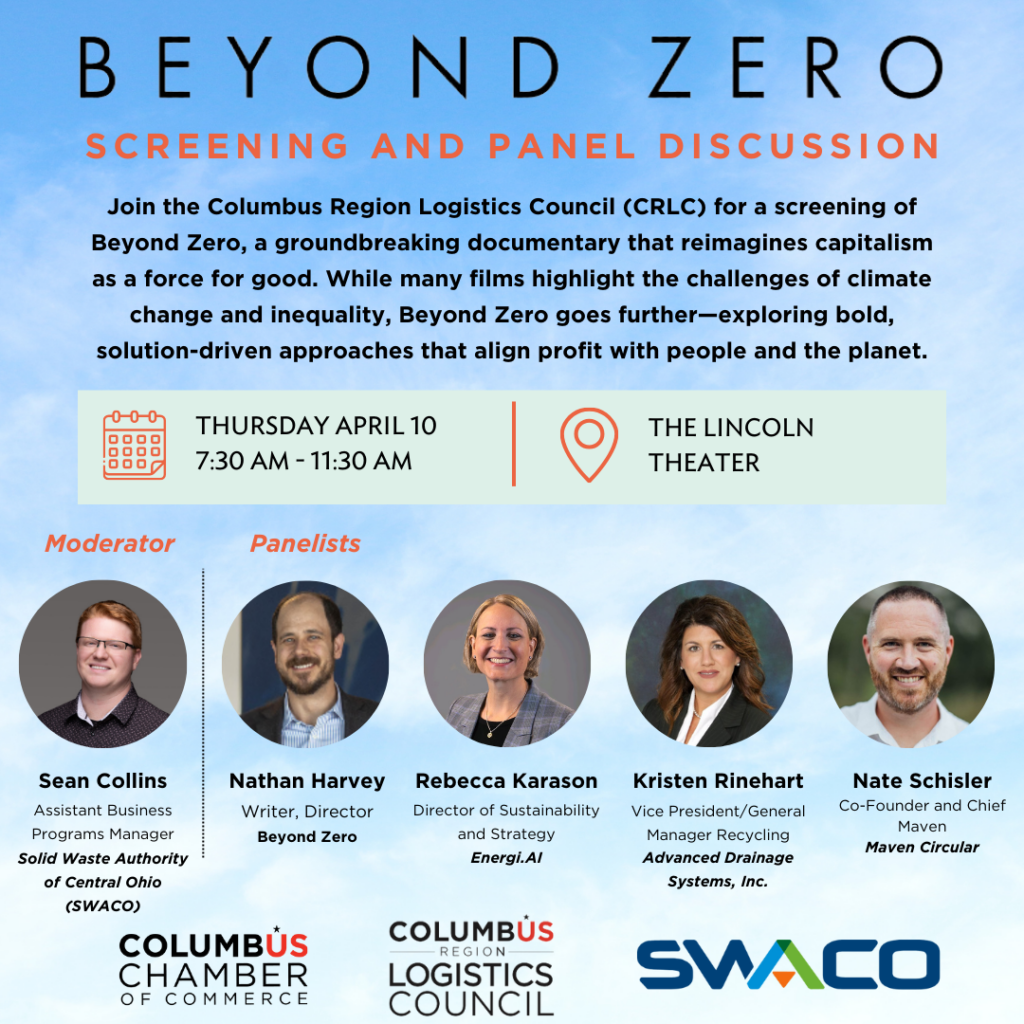Chamber News
March 2025 CRLC Insider | Sustainability in Supply Chains: Circular Economies and Going Beyond Net-Zero
March 27th, 2025
As sustainability becomes a priority in supply chains, two concepts—circular economies and going beyond net-zero—are reshaping the industry’s future. For supply chain professionals, these approaches not only reduce environmental impact but also offer new opportunities for efficiency and innovation.
Circular Economies: Redesigning Supply Chains for Sustainability
The traditional “take-make-dispose” model is unsustainable. A circular economy promotes a more sustainable approach by emphasizing reuse, recycling, and repairing products and materials, keeping them in circulation longer. Key strategies include:
- Design for longevity: Create products that last longer and are easier to repair or upgrade.
- Reverse logistics: Implement systems for product take-back, refurbishment, and reintegration into the supply chain.
- Sustainable sourcing: Use recyclable or reusable materials to reduce dependence on virgin resources.
These practices reduce waste and emissions while improving resource efficiency—key for building a sustainable supply chain.
Net-Zero and Beyond: The New Sustainability Goals
Achieving net-zero emissions is an important milestone, but it’s increasingly clear that it’s not enough. Beyond net-zero goes further by aiming to restore and regenerate the environment. This approach involves carbon removal initiatives, such as reforestation or regenerative agriculture, to have a net-positive impact on the planet.
For supply chains, achieving beyond-net-zero means not just reducing emissions but actively contributing to environmental recovery.
The Role of Circular Supply Chains in Reaching Beyond Net-Zero
Circular supply chains are a critical tool in achieving beyond net-zero goals:
- Reducing waste and emissions through reuse and recycling.
- Enabling carbon sequestration through sustainable agricultural practices.
- Closing the loop by keeping materials in circulation rather than discarding them.
How Supply Chain Professionals Can Lead the Change
Supply chain professionals can drive sustainability by:
- Optimizing resource efficiency and reducing waste.
- Collaborating with partners to implement circular practices.
- Investing in technology to track product lifecycles and improve efficiency.
- Promoting reverse logistics to ensure products are reused or recycled.
- Setting ambitious carbon goals, including carbon sequestration efforts.
A Sustainable Supply Chain for the Future
By embracing circular economies and striving for beyond-net-zero goals, supply chain professionals can help create a more sustainable, resilient future. These strategies not only reduce environmental impact but also drive cost savings, innovation, and long-term growth.
Want to learn more from companies who have “been there, done that”?
Join us on Thursday, April 10, 7:30a-11:30a at Lincoln Theater for the showing of the documentary, Beyond Zero. Included in the morning are industry professionals who are resources to the mission of carbon reduction.


